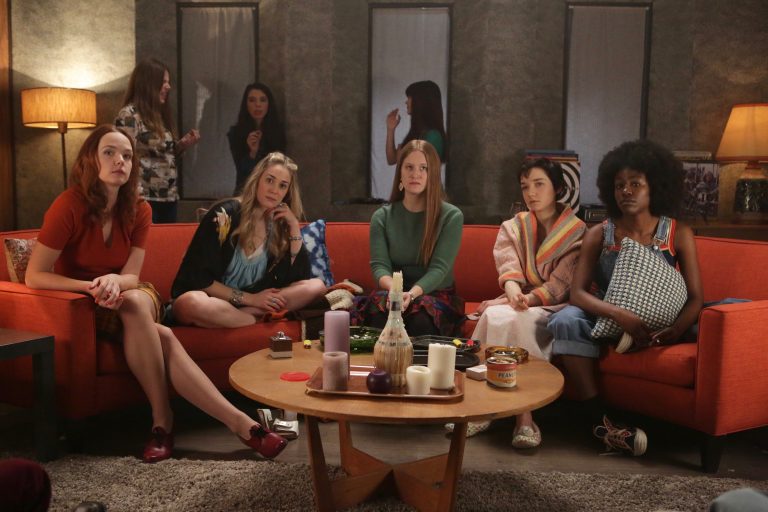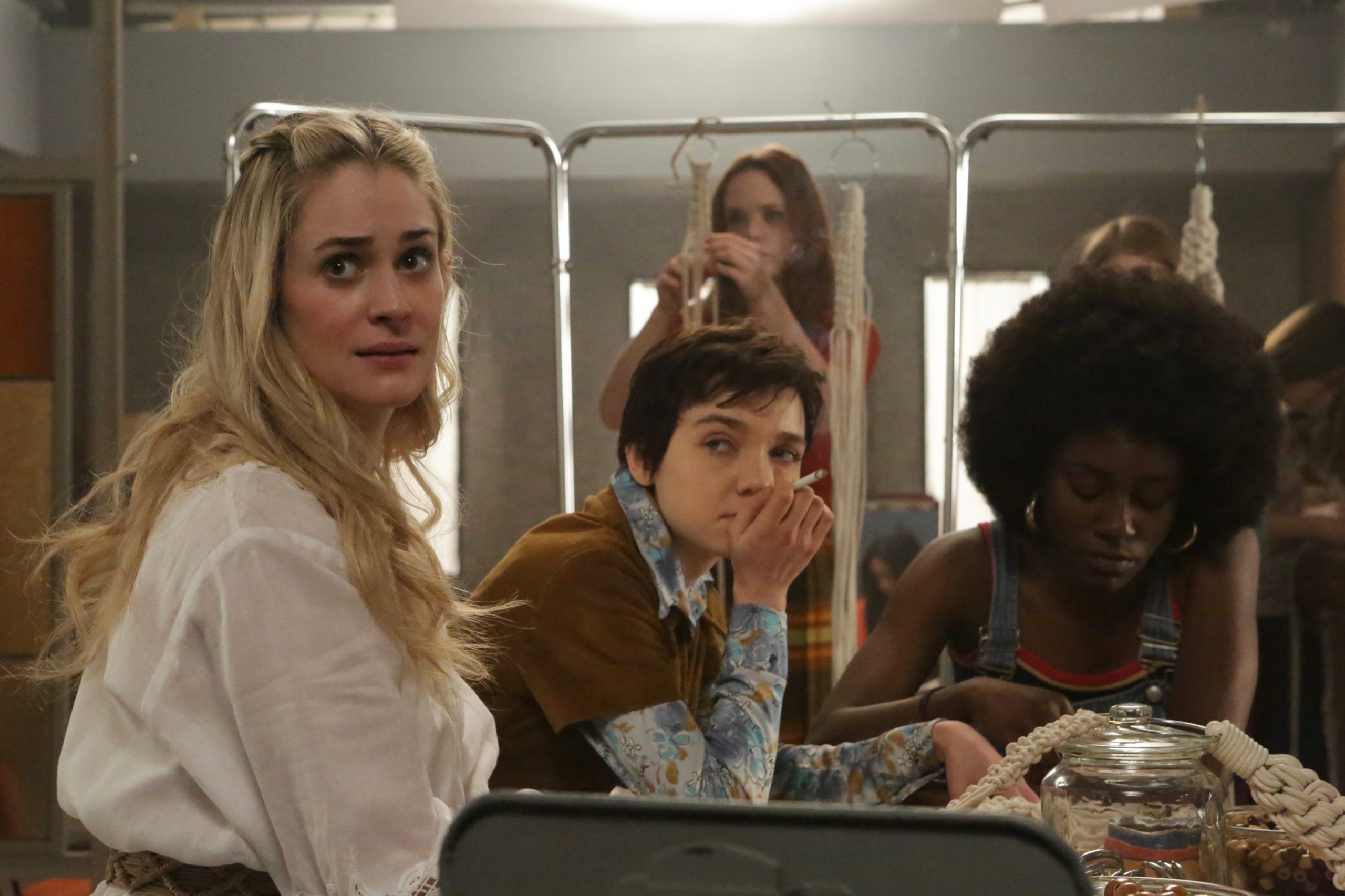
Samuel Goldwyn Films
Synopsis
In 1972, five young women looking for a fresh start in life become part of a radical experiment studying the effects of weed on women. Despite the agendas of the government, they use their unique strengths, and friendship to overcome adversity.
The Film is based on this article.
An exclusive interview with director Craig Pryce
Q : Could you talk about how this research experiment came about? I believe happened under prime-minister Pierre Elliott Trudeau who had entertained the idea of legalizing marijuana, a first in Canadian history. Please also talk about which organization was behind that research?
CP: In 1972, the Federal government had commissioned the Le Dain Report which was to do studies into whether marijuana was as dangerous as narcotics such as heroine which it was classified as. At that time, a person would receive 7 years in jail for simple possession of a joint. Meanwhile, the Provincial government was dead set against this research and decided to do their own studies on the effects of marijuana. The film focuses on a specific, true life experiment on the effects of weed on women. It was the first of its kind in the world. It was the Addiction Research Foundation of Ontario that commissioned and financed these studies.
Q: Marijuana–or should I say Cannabis– is a medicinal plant that we can find in all kind of books from past and present. It has been used as clothing, fuel and medicine. But when we hear the word “marijuana” we always associate it with the drug/ Why do we think that way? Is it because in modern medicine, marijuana cannot be given by injection, its effects are disparate, and the United States had banned its use as a medicine in the past?
CP: Yes there is a long history of the many benefits of hemp including manufacturing, etc. It wasn’t illegal to consume it in America until 1937. At that time, big pharma was growing and wasn’t interested in looking at marijuana as having medicinal purposes and lobbied for it to be illegal. As we know, cannabis is now legal in many States and in Canada, for recreational and/or medicinal purposes. There is a lot of research and validation to the benefits of various components of the marijuana plant. The reason why it’s mainly associated as a drug is because it was used mainly for recreational purposes in society for decades and only recently is becoming legitimized, researched, and practiced for medicinal purposes.
Q: It’s also interesting that some countries or even some states are allowing marijuana as a recreational drug, yet, when you go to other countries like Japan, just smoking it can get you arrested and sent to jail. And if you are a film actor or a TV personality, not only you can lose your job, but also probably can’t come back to work again in the same field. Why do you think the notion of marijuana is so different in so many countries?
CP: That’s a good question. Our film for example, because of the consumption of marijuana and also some of it’s stories and themes, is banned in many countries in the international marketplace. Drug use in a film, even when it’s a responsible and integral part of a story, is censored heavily in these countries. There are several reasons for this, partly cultural, partly religious, and partly the ideology of the government or in some cases, dictatorship in those countries.
Even in North America where it’s legal, it comes with heavy regulations. There is certain censorship that happened with our film, the marijuana industry cannot endorse or sponsor the film because their lawyers are nervous about them losing their licenses for sponsoring a cultural event that involves marijuana use. Some big social media conglomerates do not allow us to use the title of the film in our handle and others automatically reject us doing any boosting and if we appeal, we often lose. Therefore, we can’t market the film this way. Even some mainstream media has shied away from covering this film.

Q : The organization conducted 98 days research by testing 20 women who had to inhale increasingly potent joints twice a night. I wonder how many staff were there to observe these women and what kind of notes they jotted down.
CP: The pseudo-science of the experiment itself and the agendas, is a longer conversation. Specifically to address this question, the observers were mainly there for Barry, the social scientist. He was doing a field study on the women and how they interacted, behaved, and functioned. That was the behaviorist part of this experiment.
The notes they were taking were on the women’s interactions, behaviors with one another, and alone to see if the smoking group was any different than the non-smoking group. They were under observation 24 hours a day with no days off. Obviously, it is not a natural setting to have people staring at you, not speaking, and writing down your every move. The second component to this experiment was the doctors and nurses collecting physiological data to see how the women’s bodies changed with excessive and increased dosing.
Q : Even though this film doesn’t have a Hollywood star, you had a good cast that showed us their own talents. How did you assemble that cast, particularly the lead actress, Julia Sarah Stone?
CP: Everyone in the film I had either worked with before, knew of, or they were introduced to me in casting sessions. All of them auditioned for their roles and there was a large turnout, it was a very competitive. When I saw and heard each actor read for specific roles, I just knew instinctively I had found the perfect cast to distinctly and realistically bring these real women to life.
Not only are the five leads exceptional in this film, the entire support cast is wonderful. As far as Julia, I saw her in a colleague’s film and was really impressed. She agreed to audition for me remotely in Vancouver which I really appreciated. She then happened to be in Toronto for some other work so I could meet her at the callbacks. I felt very fortunate to have her and was blown away by her performance, how she channeled and captured the essence of her character.
Q: What accounted for the failure to share the data, which may still contain valuable social and physiological information if only it could be made public. Why didn’t they release that? Because it was not what they expected? Because only minor side effects were experienced by the volunteers?
CP: There is no question that the data collected both physiologically and socially, would have had tremendous merit if it were analyzed at the time. There are many theories to why it wasn’t processed and released. After looking carefully at the ethics of the experiment and some of the individuals involved, I believe they knew the results weren’t going to skew in the direction they were hoping.
Some believed the outcome would be that marijuana would have a negative impact on society and people would lose incentive to work and contribute to the economy if they became users. The side effects accumulatively were not good for the young women because they were exposed to unrealistic amounts and levels of THC on a continuous basis. Fortunately there was no long term harm to their bodies as a result, but the isolated environment and forced usage of the weed over 98 days caused psychological damage to some women who needed therapy afterwards. Some fared better than others.
 Q : But some of the women went to therapy after this research and some of them had to take time to adjust to the real world. Why did those women sue the organization, is it because they got paid?
Q : But some of the women went to therapy after this research and some of them had to take time to adjust to the real world. Why did those women sue the organization, is it because they got paid?
CP: It was a very different time back then. People were not as litigious in 1972 and it would have been extremely intimidating for young women in their 20’s to sue the government. Probably no one would take on the case and they wouldn’t have the resources to pay a good lawyer. Keep in mind at that time, women could not get a loan on their own at a bank without a man’s co-signature.
Q: During the process of research while making this film, were there any revelations that you didn’t expect?
CP: As I watched the performances and scenes, it made me realize how much the struggles of the characters and the themes of the movie are sadly still relevant and parallel many of today’s issues.
Q: These women who were part of the research study–what are they currently doing?
CP: Some have passed away, most are retired. Some of the real ladies screened the movie, there was positive feedback about how they were portrayed and the realism of the era itself. One of the main ladies whose character is featured in the film, is still working. She is being interviewed by several media outlets about her experiences and reflections on the movie as a comparison.
Q : What do you want the audience to take away from this film, particularly about the notion of marijuana?
CP: On top of being entertained and learning something, I’m finding that after the festival screenings and feedback from audiences, that the film and its themes resonated with them and the parallels in our society now. Without giving too much away, there has been reflection on our current day racism, government agendas, and how media can influence people with different slants on truth.
Also, there’s an uncanny, global relatability to the film because now we have all experienced social isolation and lockdown and have seen the mental health effects that can happen with this. Particular to marijuana, the film is not an anti-pot or pro pot movie. It’s really about forced consumption and using the drug to manipulate a preconceived result. Currently the film itself, despite legalization in many States and Canada, has had censorship issues as mentioned earlier.
Here’s trailer for the film, “The Marijuana Conspiracy.”
The film released on April 20, available on demand and digital, Youtube, Amazon, Apple TV, Vudo, Google Play and FandangoNow.

